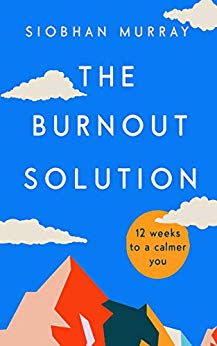The Burnout Solution: 12 weeks to a calmer you

The recognition that burnout is more than a “job thing” and can impact any area of your life was one of the reasons why the book The Burnout Solution: 12 weeks to a calmer you was interesting. As with most burnout books I’ve read, there’s a lot to agree with – and enough to disagree with.
The Role of Stress
Many people – particularly those who have been led astray by some of the academic literature – like to say that burnout is caused by stress. The problem is that’s an oversimplification of what’s really going on. To understand, we must understand the basics of stress, how we appraise stressors, and, ultimately, the root cause of burnout.
When it comes to stress, I always start with Why Zebras Don’t get Ulcers. I start there because it’s the most complete coverage of stress that I’ve found. It took me three blog posts to do a review of it because the information was that powerful. The short version of stress is that it’s a “payday” loan. It’s a high interest loan against the future, so that you can survive today. When we feel stressed, our body makes choices that work for the short term at the expense of our long-term productivity, energy, and efficacy. One of the things in Why Zebras Don’t Get Ulcers that contradicts The Burnout Solution is that the impact of stress is a reduction in immune system response – not an increase. Research consistently shows that the introduction of steroids (including the cortisol released during stress) makes people more susceptible to infection, not less.
The tricky part about stress is that it’s almost always generated internally. Certainly, there are objective stressors in the environment, but they don’t convert to stress unless our appraisal of the stressor is that we’ll be overly harmed or overwhelmed by it. (See Emotion and Adaptation for more on how we appraise our emotions – including fear, which causes stress.) When we believe that we have all the resources and support necessary to overcome the stressor without any real risk, a stressor doesn’t convert to a stress. Thus, stress is something we generate internally.
The root of burnout is our belief that we can’t be effective. If we can’t manage our stressors, we can’t make progress towards our goals, and we’ll perceive ourselves to be in burnout. Secondarily, the impact of stress is short-term gain at the expense of long-term efficacy, which further deepens the perception that you’re not effective. At some level, stress is coincident with burnout, because the belief that you can’t navigate or overcome the stressors exists in both. However, at another level, stress is just a sidekick, not a cause.
Self-Imposed Demands
When Terri and I talk about the bathtub model in Extinguish Burnout, we explain that demands have a valve, and we can control the degree to which we accept them – even the degree to which we generate them ourselves. It’s one thing to learn to say no to others. It’s another thing to say no to the “shoulds” and “aughts” that happen inside your head.
More than anything, understanding how we view our demands and learning to change our perspective can allow us to hold onto our personal agency.
Impatience is a Reaction, Patience is a Response
When it comes to finding more calm, learning to respond and not react is important. We’re wired with two systems (to use Kahneman’s language from Thinking, Fast and Slow). The first system is quick and instinctual but often devoid of consideration of the long-term consequences of actions. The second system is more contemplative and is a response instead of a reaction.
When we tune our ability to change our appraisal of events, and we can consider them in a larger context, we’re able to be calmer – and, in the perspective of The Burnout Solution, we’re able to prevent burnout. I believe finding calm is an important goal. I even believe that reducing stress will reduce the degree of burnout you’re feeling, but I’m not convinced that solving stress alone will do it. However, read The Burnout Solution and make your own decision.
